The Teide Violet or viola cheiranthifolia is a perennial plant with herbaceous habit, narrow leaves and tricolor flowers similar to pansies. It grows among the rocks of the Teide volcano in Tenerife and is the plant that blooms at the highest altitude in Spain.
These flowers are endowed with a spur and are multicolored, although mauve and violet tones predominate with yellow and white mottling in the central zone. This plant species inhabits scree or lapillis, as well as rocky slopes, and ranges from 2,700 to 3,300 meters above sea level.
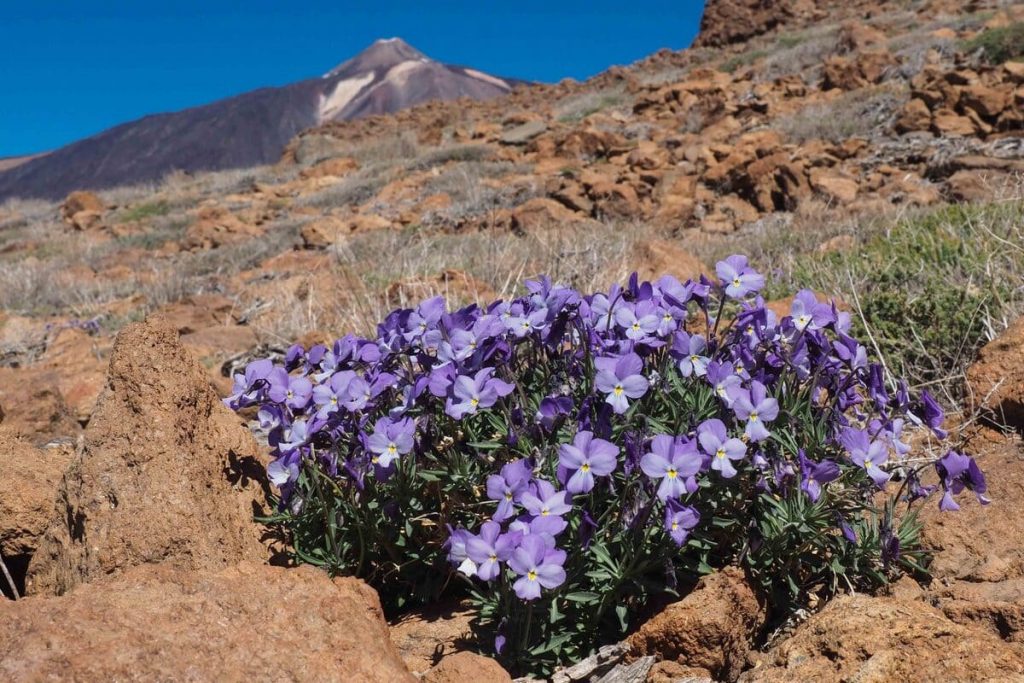
In the Teide National Park, the violet grows in the area of Las Cañadas, Montaña Blanca, Pico Viejo and Pico del Teide. Since 1991, it has been subject to a thorough conservation plan along with other species. The Teide Violet is the plant that blooms at the highest altitude in all of Spain, and can even be observed in the crater of Teide itself.
In addition, the Teide Violet is described by Alexander Von Humboldt (Austrian explorer, naturalist, geographer and humanist who visited Tenerife in 1799) as the most fragile and delicate species of the Cañadas del Teide National Park.
A general description of the Violet of Teide
This flower is an endemic species of the island of Tenerife. It is a herbaceous, perennial, creeping or somewhat erect plant between 5 and 25 centimeters high, provided with rhizomes (a subway stem) and abundant branching.
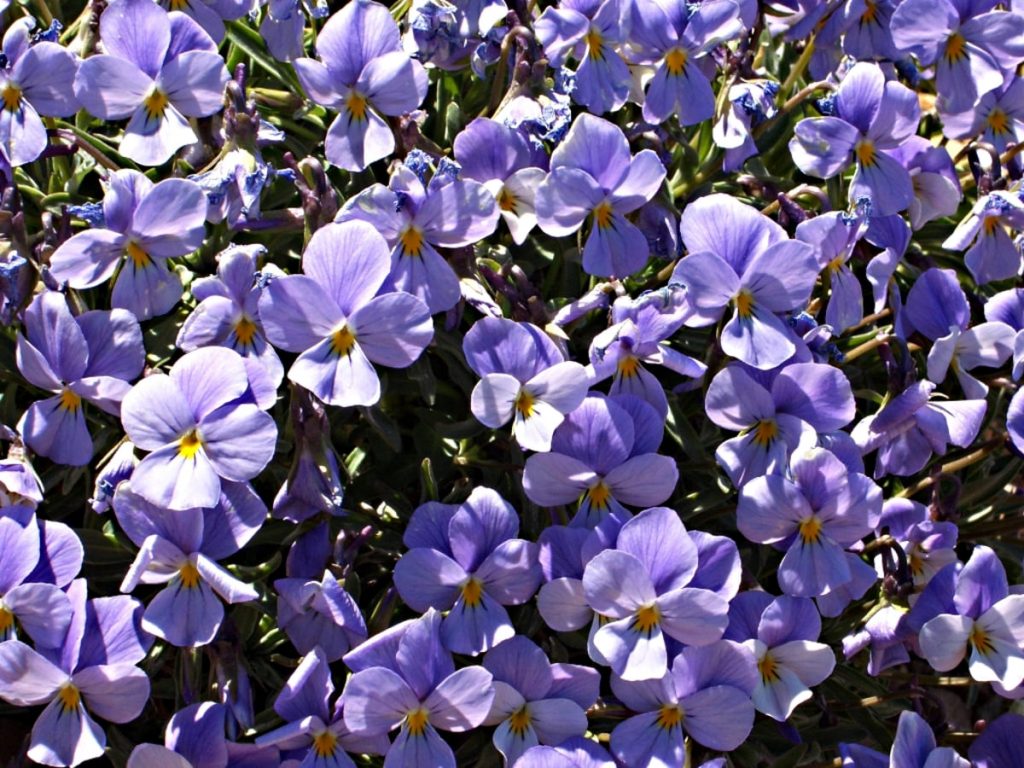
Its leaves are narrow, green to grayish-green, densely pubescent. Its showy flowers have a mauve and white coloration with yellow spots and resemble the mythical pansies that are grown in many gardens.
Its leaves
Violeta del Teide has small leaves, in rosettes, entirely covered by a soft and dense tomentum. They are simple, alternate, somewhat fleshy, ovate-spatulate morphology, entire margin or somewhat sinuate and a color between green and grayish.
Its small flowers
The Teide Violet has solitary flowers with a short spur and supported by short peduncles. The calyx is formed by five sepals, while the corolla has 5 petals of variable coloration between blue and mauve, white and yellow. The lower lip or petal has a yellow coloration at the base and a well visible drawing. The fruits of the violet are dehiscent capsules, provided with three valves that contain in their interior numerous conical, carunculated, light brown seeds.
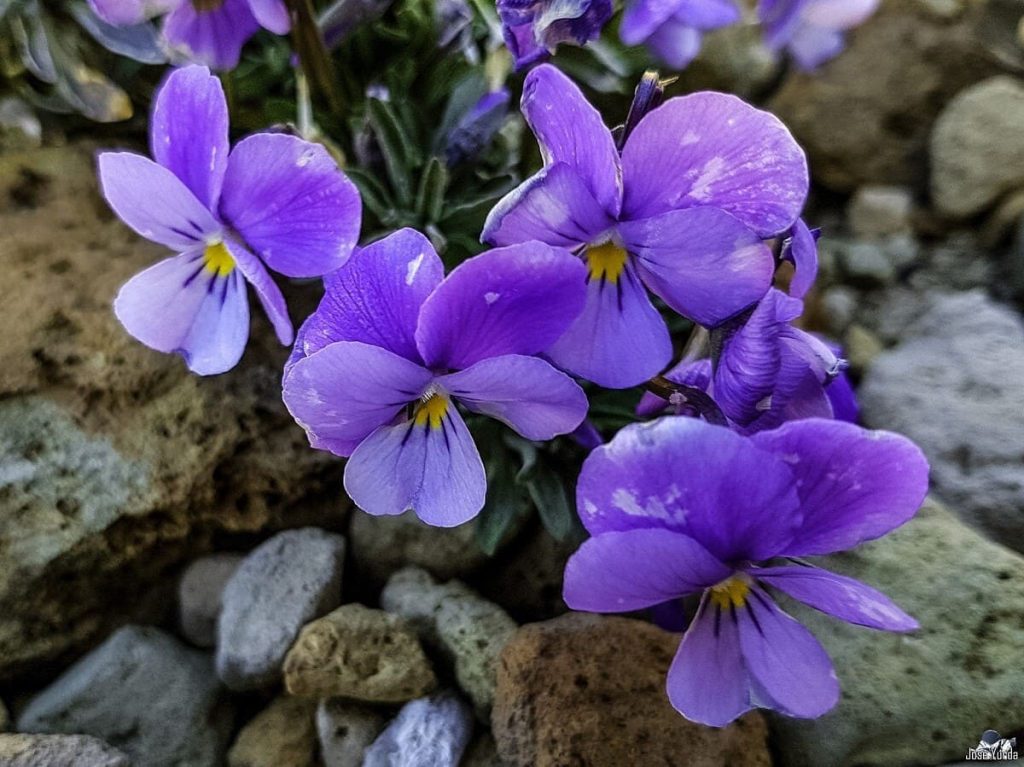
Its habitat, a National Park
The Teide Violet is a local endemism of the summits of the Teide National Park. In the wild, it only grows above 2 400 meters altitude, reaching up to 3 600 meters in the terminal zone of the Pico del Teide. It inhabits pumice fields and rocky slopes.
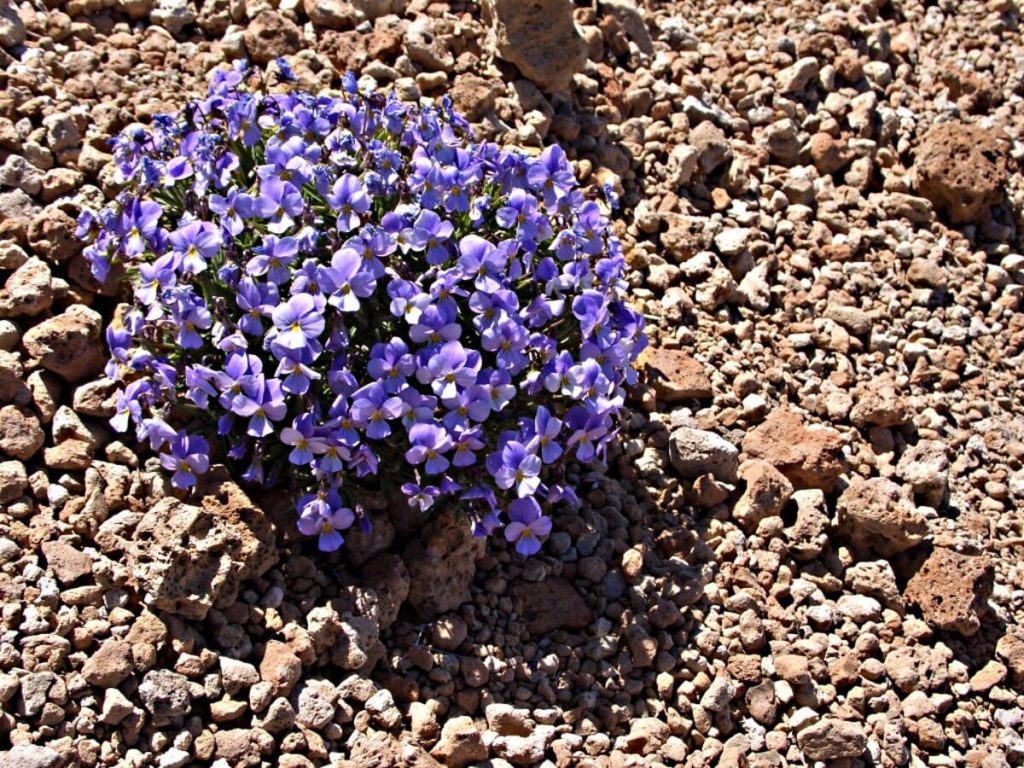
The most important populations of this plant are found in the area of Montaña Blanca, Pico del Teide and Pico Viejo. The Teide violet community is poor in species although it may be accompanied by: Teide daisy (Argyranthemum tenerifae), Teide canutillo (Silene nocteolens) and silver thistle (Rhaponticum canariense).
Some curiosities about the Violet of Teide
This small flower, as we have already mentioned, is considered one of the flowering plants that grows at the highest altitude in Spain. Another aspect to highlight of the Teide Violet is that the visible parts of this plant disappear in the winter months to sprout in the spring. In the Canary Islands, there are 10 species of the genus Viola, 5 of which are native and endemic to some islands. It should be noted that 3 of these species: Viola cheiranthifolia, Viola guaxarensis and Viola palmensis inhabit the high Canary Islands mountains. The first two on the island of Tenerife and the third on the island of La Palma.
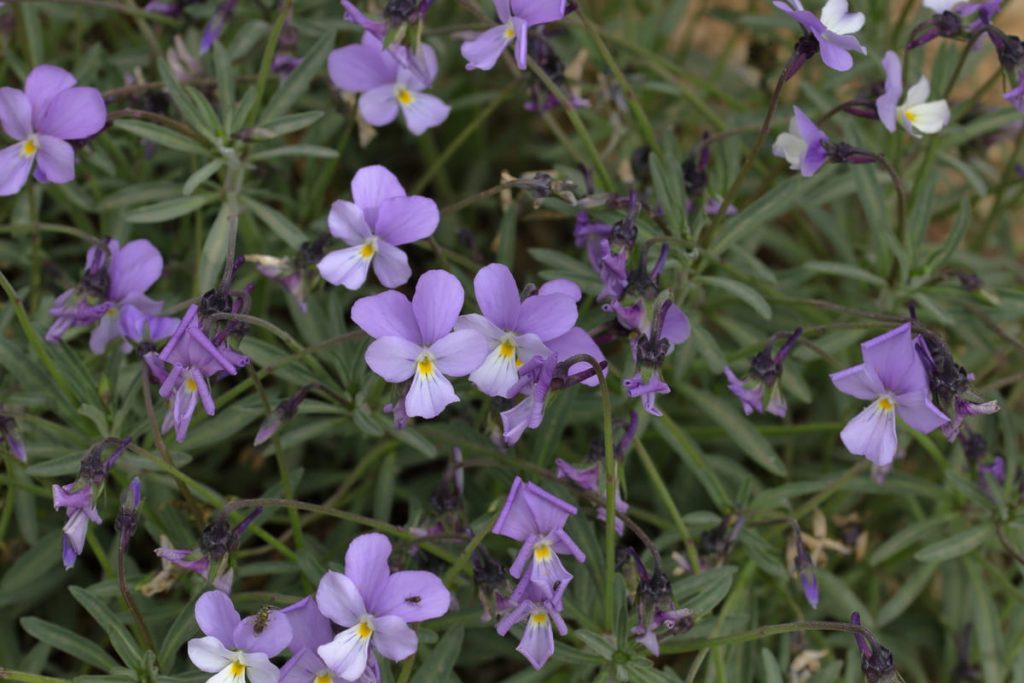
The Canary Islands is a land with a thousand things to see, explore and learn about. If you are interested in learning more interesting facts about the Canary Islands, here is a link to the Explora Canarias section of Marca Canaria.
Paula Vera
Photos: Flickr, Government of the Canary Islands



